Tiancheng Hu
Scaling Low-Resource MT via Synthetic Data Generation with LLMs
May 20, 2025



Abstract:We investigate the potential of LLM-generated synthetic data for improving low-resource machine translation (MT). Focusing on seven diverse target languages, we construct a document-level synthetic corpus from English Europarl, and extend it via pivoting to 147 additional language pairs. Automatic and human evaluation confirm its high overall quality. We study its practical application by (i) identifying effective training regimes, (ii) comparing our data with the HPLT dataset, and (iii) testing its utility beyond English-centric MT. Finally, we introduce SynOPUS, a public repository for synthetic parallel datasets. Our findings show that LLM-generated synthetic data, even when noisy, can substantially improve MT performance for low-resource languages.
iNews: A Multimodal Dataset for Modeling Personalized Affective Responses to News
Mar 05, 2025Abstract:Current approaches to emotion detection often overlook the inherent subjectivity of affective experiences, instead relying on aggregated labels that mask individual variations in emotional responses. We introduce iNews, a novel large-scale dataset explicitly capturing subjective affective responses to news headlines. Our dataset comprises annotations from 291 demographically diverse UK participants across 2,899 multimodal Facebook news posts from major UK outlets, with an average of 5.18 annotators per sample. For each post, annotators provide multifaceted labels including valence, arousal, dominance, discrete emotions, content relevance judgments, sharing likelihood, and modality importance ratings (text, image, or both). Furthermore, we collect comprehensive annotator persona information covering demographics, personality, media trust, and consumption patterns, which explain 15.2% of annotation variance - higher than existing NLP datasets. Incorporating this information yields a 7% accuracy gain in zero-shot prediction and remains beneficial even with 32-shot. iNews will enhance research in LLM personalization, subjectivity, affective computing, and individual-level behavior simulation.
When Personalization Meets Reality: A Multi-Faceted Analysis of Personalized Preference Learning
Feb 26, 2025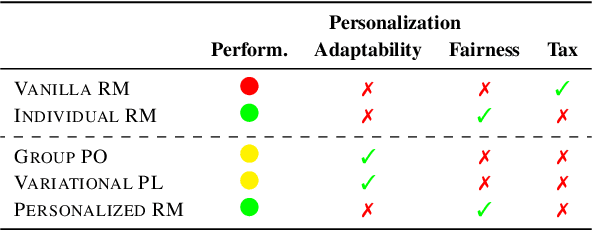
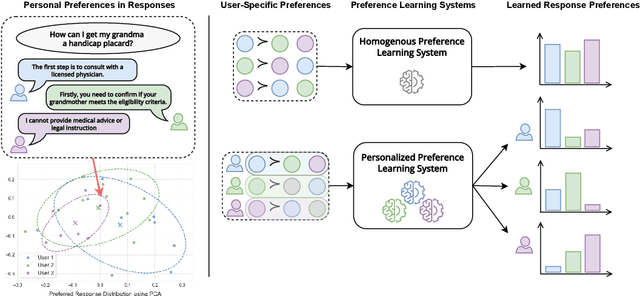

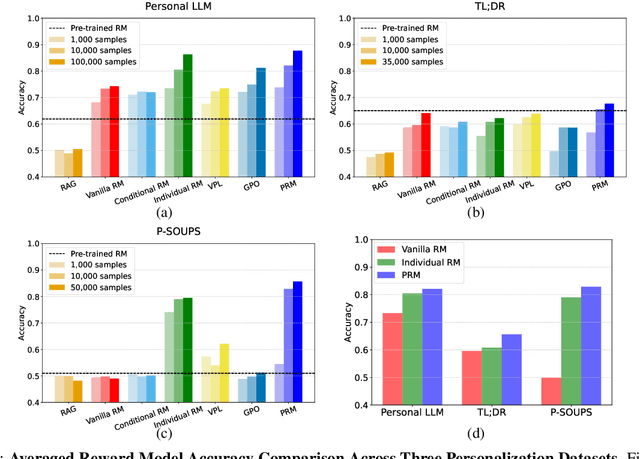
Abstract:While Reinforcement Learning from Human Feedback (RLHF) is widely used to align Large Language Models (LLMs) with human preferences, it typically assumes homogeneous preferences across users, overlooking diverse human values and minority viewpoints. Although personalized preference learning addresses this by tailoring separate preferences for individual users, the field lacks standardized methods to assess its effectiveness. We present a multi-faceted evaluation framework that measures not only performance but also fairness, unintended effects, and adaptability across varying levels of preference divergence. Through extensive experiments comparing eight personalization methods across three preference datasets, we demonstrate that performance differences between methods could reach 36% when users strongly disagree, and personalization can introduce up to 20% safety misalignment. These findings highlight the critical need for holistic evaluation approaches to advance the development of more effective and inclusive preference learning systems.
EPIC: Efficient Position-Independent Context Caching for Serving Large Language Models
Oct 20, 2024Abstract:Large Language Models (LLMs) are critical for a wide range of applications, but serving them efficiently becomes increasingly challenging as inputs become more complex. Context caching improves serving performance by exploiting inter-request dependency and reusing key-value (KV) cache across requests, thus improving time-to-first-token (TTFT). However, existing prefix-based context caching requires exact token prefix matches, limiting cache reuse in few-shot learning, multi-document QA, or retrieval-augmented generation, where prefixes may vary. In this paper, we present EPIC, an LLM serving system that introduces position-independent context caching (PIC), enabling modular KV cache reuse regardless of token chunk position (or prefix). EPIC features two key designs: AttnLink, which leverages static attention sparsity to minimize recomputation for accuracy recovery, and KVSplit, a customizable chunking method that preserves semantic coherence. Our experiments demonstrate that Epic delivers up to 8x improvements in TTFT and 7x throughput over existing systems, with negligible or no accuracy loss. By addressing the limitations of traditional caching approaches, Epic enables more scalable and efficient LLM inference.
Can LLM be a Personalized Judge?
Jun 17, 2024Abstract:Ensuring that large language models (LLMs) reflect diverse user values and preferences is crucial as their user bases expand globally. It is therefore encouraging to see the growing interest in LLM personalization within the research community. However, current works often rely on the LLM-as-a-Judge approach for evaluation without thoroughly examining its validity. In this paper, we investigate the reliability of LLM-as-a-Personalized-Judge, asking LLMs to judge user preferences based on personas. Our findings suggest that directly applying LLM-as-a-Personalized-Judge is less reliable than previously assumed, showing low and inconsistent agreement with human ground truth. The personas typically used are often overly simplistic, resulting in low predictive power. To address these issues, we introduce verbal uncertainty estimation into the LLM-as-a-Personalized-Judge pipeline, allowing the model to express low confidence on uncertain judgments. This adjustment leads to much higher agreement (above 80%) on high-certainty samples for binary tasks. Through human evaluation, we find that the LLM-as-a-Personalized-Judge achieves comparable performance to third-party humans evaluation and even surpasses human performance on high-certainty samples. Our work indicates that certainty-enhanced LLM-as-a-Personalized-Judge offers a promising direction for developing more reliable and scalable methods for evaluating LLM personalization.
The Potential and Challenges of Evaluating Attitudes, Opinions, and Values in Large Language Models
Jun 16, 2024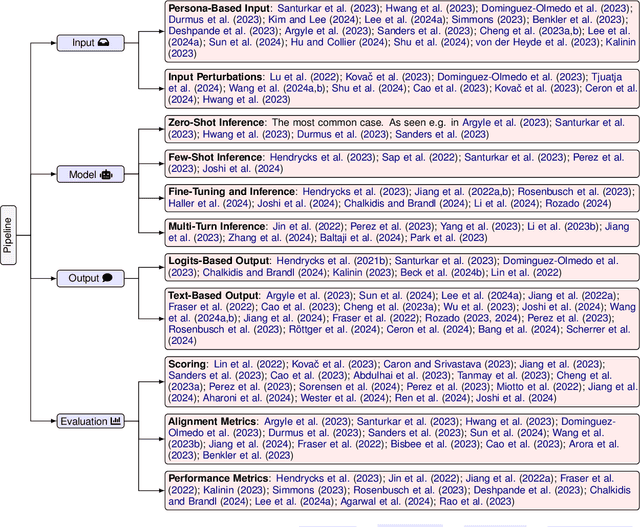
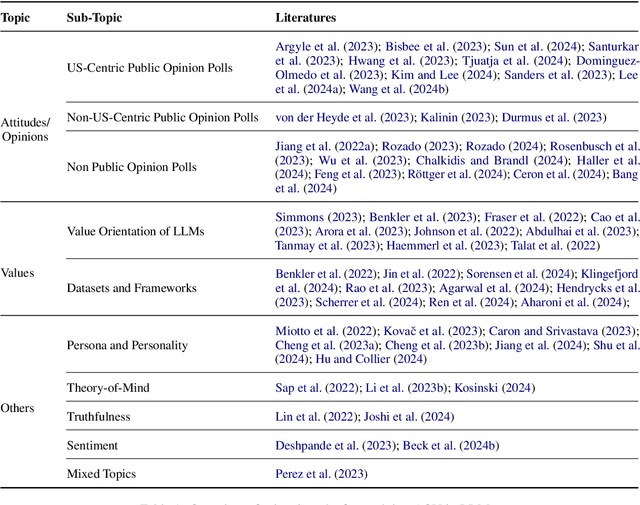

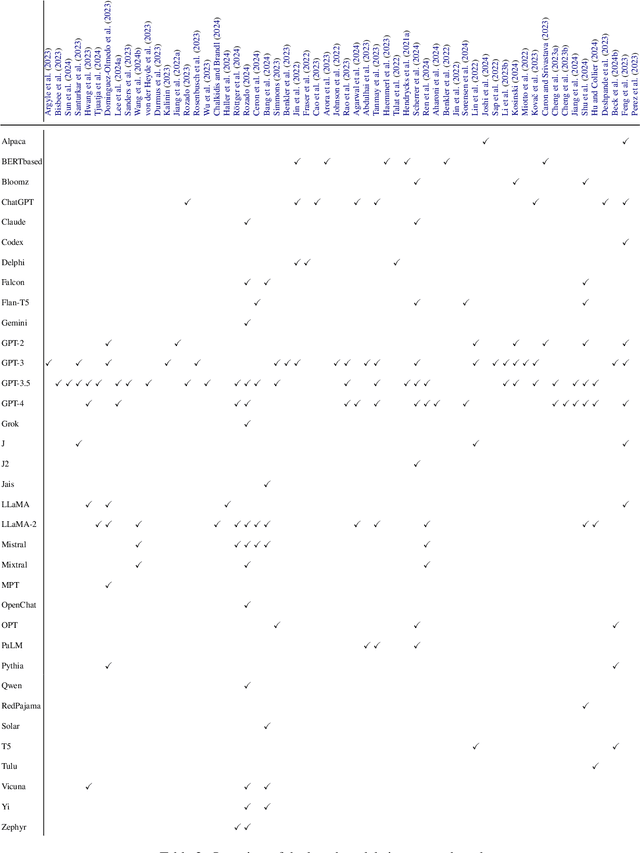
Abstract:Recent advances in Large Language Models (LLMs) have sparked wide interest in validating and comprehending the human-like cognitive-behavioral traits LLMs may have. These cognitive-behavioral traits include typically Attitudes, Opinions, Values (AOV). However, measuring AOV embedded within LLMs remains opaque, and different evaluation methods may yield different results. This has led to a lack of clarity on how different studies are related to each other and how they can be interpreted. This paper aims to bridge this gap by providing an overview of recent works on the evaluation of AOV in LLMs. Moreover, we survey related approaches in different stages of the evaluation pipeline in these works. By doing so, we address the potential and challenges with respect to understanding the model, human-AI alignment, and downstream application in social sciences. Finally, we provide practical insights into evaluation methods, model enhancement, and interdisciplinary collaboration, thereby contributing to the evolving landscape of evaluating AOV in LLMs.
Can Language Models Recognize Convincing Arguments?
Mar 31, 2024



Abstract:The remarkable and ever-increasing capabilities of Large Language Models (LLMs) have raised concerns about their potential misuse for creating personalized, convincing misinformation and propaganda. To gain insights into LLMs' persuasive capabilities without directly engaging in experimentation with humans, we propose studying their performance on the related task of detecting convincing arguments. We extend a dataset by Durmus & Cardie (2018) with debates, votes, and user traits and propose tasks measuring LLMs' ability to (1) distinguish between strong and weak arguments, (2) predict stances based on beliefs and demographic characteristics, and (3) determine the appeal of an argument to an individual based on their traits. We show that LLMs perform on par with humans in these tasks and that combining predictions from different LLMs yields significant performance gains, even surpassing human performance. The data and code released with this paper contribute to the crucial ongoing effort of continuously evaluating and monitoring the rapidly evolving capabilities and potential impact of LLMs.
Quantifying the Persona Effect in LLM Simulations
Feb 16, 2024



Abstract:Large language models (LLMs) have shown remarkable promise in simulating human language use and behavior. In this study, we delve into the intersection of persona variables and the capability of LLMs to simulate different perspectives. We find that persona variables can explain <10\% variance in annotations in existing subjective NLP datasets. Nonetheless, incorporating them via prompting in LLMs provides modest improvement. Persona prompting is most effective on data samples where disagreements among annotators are frequent yet confined to a limited range. A linear correlation exists: the more persona variables influence human annotations, the better LLMs predictions are using persona prompting. However, when the utility of persona variables is low (i.e., explaining <10\% of human annotations), persona prompting has little effect. Most subjective NLP datasets fall into this category, casting doubt on simulating diverse perspectives in the current NLP landscape.
Generative Language Models Exhibit Social Identity Biases
Oct 24, 2023Abstract:The surge in popularity of large language models has given rise to concerns about biases that these models could learn from humans. In this study, we investigate whether ingroup solidarity and outgroup hostility, fundamental social biases known from social science, are present in 51 large language models. We find that almost all foundational language models and some instruction fine-tuned models exhibit clear ingroup-positive and outgroup-negative biases when prompted to complete sentences (e.g., "We are..."). A comparison of LLM-generated sentences with human-written sentences on the internet reveals that these models exhibit similar level, if not greater, levels of bias than human text. To investigate where these biases stem from, we experimentally varied the amount of ingroup-positive or outgroup-negative sentences the model was exposed to during fine-tuning in the context of the United States Democrat-Republican divide. Doing so resulted in the models exhibiting a marked increase in ingroup solidarity and an even greater increase in outgroup hostility. Furthermore, removing either ingroup-positive or outgroup-negative sentences (or both) from the fine-tuning data leads to a significant reduction in both ingroup solidarity and outgroup hostility, suggesting that biases can be reduced by removing biased training data. Our findings suggest that modern language models exhibit fundamental social identity biases and that such biases can be mitigated by curating training data. Our results have practical implications for creating less biased large-language models and further underscore the need for more research into user interactions with LLMs to prevent potential bias reinforcement in humans.
The Causal News Corpus: Annotating Causal Relations in Event Sentences from News
Apr 25, 2022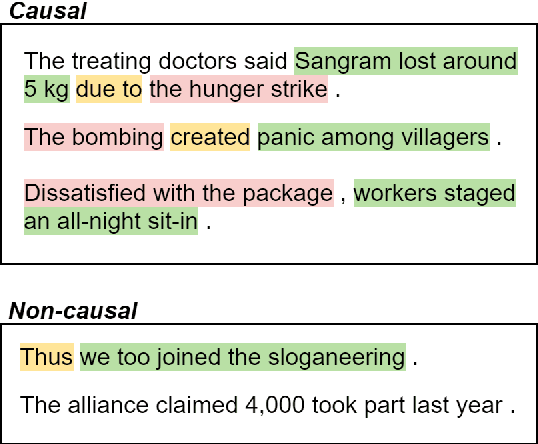
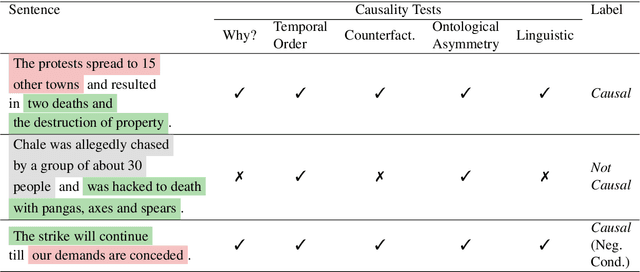
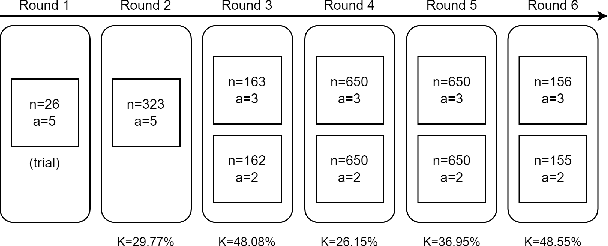
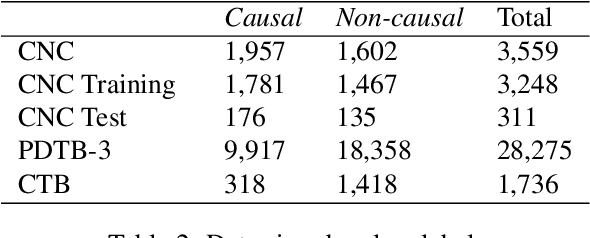
Abstract:Despite the importance of understanding causality, corpora addressing causal relations are limited. There is a discrepancy between existing annotation guidelines of event causality and conventional causality corpora that focus more on linguistics. Many guidelines restrict themselves to include only explicit relations or clause-based arguments. Therefore, we propose an annotation schema for event causality that addresses these concerns. We annotated 3,559 event sentences from protest event news with labels on whether it contains causal relations or not. Our corpus is known as the Causal News Corpus (CNC). A neural network built upon a state-of-the-art pre-trained language model performed well with 81.20% F1 score on test set, and 83.46% in 5-folds cross-validation. CNC is transferable across two external corpora: CausalTimeBank (CTB) and Penn Discourse Treebank (PDTB). Leveraging each of these external datasets for training, we achieved up to approximately 64% F1 on the CNC test set without additional fine-tuning. CNC also served as an effective training and pre-training dataset for the two external corpora. Lastly, we demonstrate the difficulty of our task to the layman in a crowd-sourced annotation exercise. Our annotated corpus is publicly available, providing a valuable resource for causal text mining researchers.
 Add to Chrome
Add to Chrome Add to Firefox
Add to Firefox Add to Edge
Add to Edge